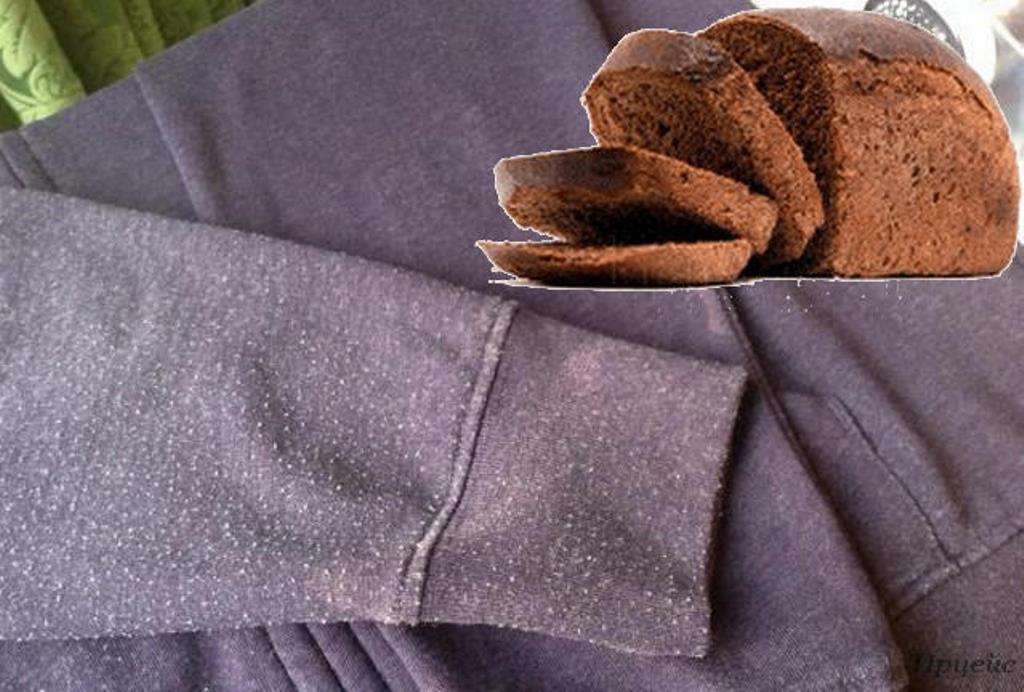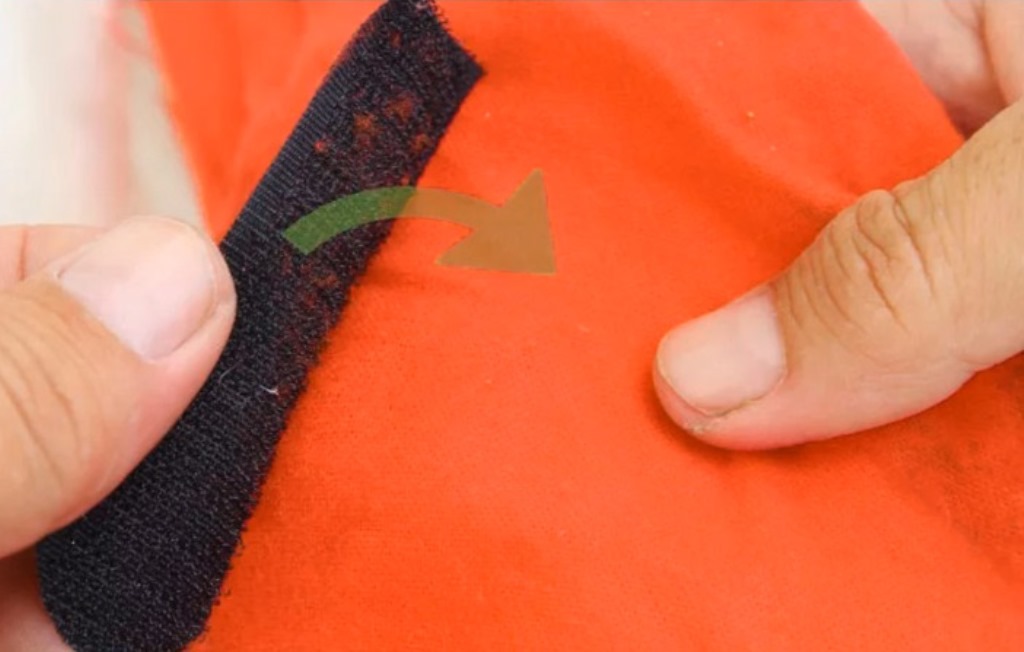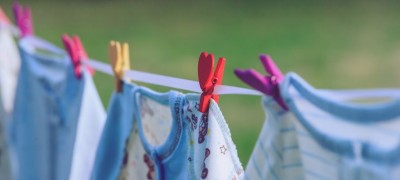Cleaning clothes from spools
Surely everyone has come across such an unpleasant phenomenon as textile spools. They look sloppy and even careless, and also significantly spoil the appearance of clothes. However, do not rush to throw out your favorite sweaters and pants and run to the store hoping to update your wardrobe. It is quite easy to get rid of them, and the old thing will look like new. Old methods and new devices will help in this.

Causes of pellets on clothes
It is generally accepted that pellets appear in the process of wearing only on low-quality clothes, however, expensive things are not insured against their appearance.

The main reasons for their appearance are:
- low inclusion of synthetic fibers in natural fabrics. It is important to note, however, that synthetic items are less prone to this problem;
- loose material was used in the manufacture, the threads are not twisted enough, long broaches on the clothes. This problem can be identified even at the stage of purchasing a product, since such defects are visible to the naked eye;
- violation of the rules for caring for the product, namely washing in hot water or using an unsuitable detergent;
- constant close contact with other things and surfaces.
How to get rid of pellets on clothes (from a sweater, from a jacket, from a T-shirt, from pants, from trousers, from tights, from a dress, knitwear, leggings, socks, cashmere)
You should not rush to get rid of your favorite wool dress or T-shirt when the unwanted pellets begin to be seen. Of course, the appearance is spoiled, but the situation is fixable. There are many ways to tidy up pilling on your coat, your favorite turtleneck, leggings, or comfy pants. There is only one thing left from the hostess - to choose the most convenient and safe method of how to clean the product, relying on the texture of the fabric.

Machine to remove the pellets
It is a modern, simple and effective method for removing unpleasant pellets. On the shelves in stores, devices from different companies are presented, but their principle of operation remains the same. After pressing the button, the knives of the apparatus, covered with a special mesh, begin to rotate at high speed. The cut lumps are sent to a special tank, which is important to periodically clean. The machine works delicately, therefore it is suitable for the care of almost all types of fabrics. The rotation of a small motor in most cases is based on operation from AA batteries. Less common are devices with rechargeable batteries.

Important! Do not use the device on terry cloth, plush or embroidery.
The device is turned on and applied to clothes, neatly laid out on the table. Avoid creases and do not press too hard on the fabric. Despite the protective cap, the risk of damaging the fabric is still great.

Razor
This method is one of the oldest, but still remains popular today. First of all, you need to find a machine with slightly dull blades. New machines that are too sharp will not only cut the spools, but can also cut the fiber. The soap strip must be removed so that it does not leave a trace. Then the thing is laid out on a flat surface and all the folds are completely smoothed out. Then, with light movements, the razor is moved along the knitting of the threads. It is necessary to clean the spools in the opposite direction, since there is a high risk of cutting the loop and ultimately getting a hole. It is better to remove the pellets with a blade from hats, socks and tights.

Important! The method is not suitable for embossed fabrics and knitted woolen sweaters, as there is a high risk of ruining them.
It is permissible to replace the usual safe machine with a blade. However, in this case, it is important to take care not to cut not only the tissue, but also the finger.

Adhesive tape roller
This is a special device for removing dust particles, lint, pet hair from clothes. The device is a rotating roller handle, and replaceable blocks with adhesive tape are put on the reel.

Before removing the spools from the clothes, place them on a flat and clean surface and remove the first sheet from the replaceable round block. With the adhesive tape, they begin to drive over the product in different directions. When the tape loses its stickiness, you can tear off the used sheet and continue cleaning.

This method is only suitable for “fresh” pellets that have just begun to form. As a pleasant bonus, the hostess receives perfectly clean clothes without a single speck.
Sandpaper
Before starting to remove the pellets from clothes at home using this method, make sure that then the pile will not come out of the fabric. Most often, these will be products made of synthetics and knitwear. Cleaning this way will ruin delicate thin fabrics.

Prepare a fine-grained sandpaper and gently process each section of the jumper with gentle movements. It will take several movements to get rid of the ugly nodules. You can replace the sandpaper with a pumice stone. Stones designed for cleaning clothes will work, but stones for foot hygiene are also acceptable. The movements when using the stone remain the same gentle and accurate. Do not process the same area for too long. Check it regularly so that there is no chaf or hole that will be much more difficult to fix.

Bread rusks
This is a fairly popular method among old school housewives. It has been used to maintain the appearance for a long time.

A large piece of porous bread is laid out in the open air under the rays of the sun and dried. To speed up the process, you can use the oven. When the biscuit is ready, it is used like sandpaper or pumice stone, cleaning off textile lumps from clothes. The main advantage of this method is also the alignment of the texture of the fabric on the worn areas. However, do not press hard, otherwise you will have to clean the clothes from the crumbs later.

Scissors
This method is suitable for those who are in no rush and are willing to spend a fair amount of time cleaning their clothes. It is best to use thin, sharpened nail scissors. They process each pellet separately. It is important to be extremely careful not to damage the threads of the canvas, so it is better to choose tools with curved tips.

Dry cleaning
If there is no time for a long and tedious cleaning of clothes with improvised means, then you can use dry cleaning services. This method is the most expensive of all of the above, but specialists will not only clean the clothes from dirt and remove all the pellets, but additionally process the thing with a solution that prevents their formation. However, dry cleaning every time is not the best idea that will hit your wallet. Therefore, this method is better suited for delicate fabrics and outerwear, for example, for a cashmere or suede coat, than for old bed linen, which is more profitable to clean in your free time at home.

Toothbrush
Due to the small surface of the brush, this method is considered to be quite laborious. Products made from mohair or angora lend themselves best to cleaning. A brush is moved along the fibers, as if combing. From time to time it is necessary to remove lumps from the bristles. Do not stretch the fabric too much. As the procedure is completed, the clothes are rinsed in slightly acidified water to add fluffiness. Then it is left to dry on a flat, smooth surface. Move the dryer as far as possible from the radiator or battery. After drying, the item will be fluffy, like from a store.

Important! Alternatively, you can use a fine, tightly-toothed comb. At the same time, be careful not to tighten with teeth. It is placed parallel to the fabric, threaded through the pellets and pulled up.
Dish sponge
This simple and versatile piece is suitable not only for the kitchen, but also helps to tidy up, and also helps to maintain the neat appearance of clothes.

This option involves using a clean new hard-sided sponge. The entire surface is treated with it, and scotch tape or a roller with adhesive tape is suitable to collect the fallen off spools.
Important! The sponge must be dry.

Scotch
The principle of removing unwanted pellets with scotch tape is similar to using adhesive tape. The main condition is high-quality adhesive tape with a good adhesive base. A strip of adhesive tape is applied to the fabric laid out on the surface, pressed and smoothed. The length of this strip is determined by eye, based on the size of the treated area. Make sure that there are no voids left. Then, with a sharp movement of the hand, the strip is torn off. The procedure is repeated until the entire product has been processed. When the adhesive is full, cut off a new strip of tape.

Velcro
It is a Velcro fastener that is sewn onto clothes or shoes. Half of the textile fastener, which is equipped with plastic hooks, is applied to the resulting lumps, smoothed and then removed. If there is no such fastener at home, then you can use curlers, as if combing a thing. In this case, all actions must be neat and smooth, otherwise the hostess risks putting puffs on the clothes.

As all the hooks are filled, they are cleaned with a match or toothpick.
Important! the method is not suitable for products made of fine wool and curly weaving.
Removing ugly spools is quite simple. However, it is better not to allow them to appear at all. Housewives should more carefully choose washing powder, fabric softener. It is better to wash delicate items by hand, so they will remain soft and beautiful for a long time. If there is no time for this, then use the delicate mode on the washing machine. Clean things regularly with the available cleaning products and avoid the formation of large pellets.

VIDEO: 5 ways to get rid of pellets on clothes.









